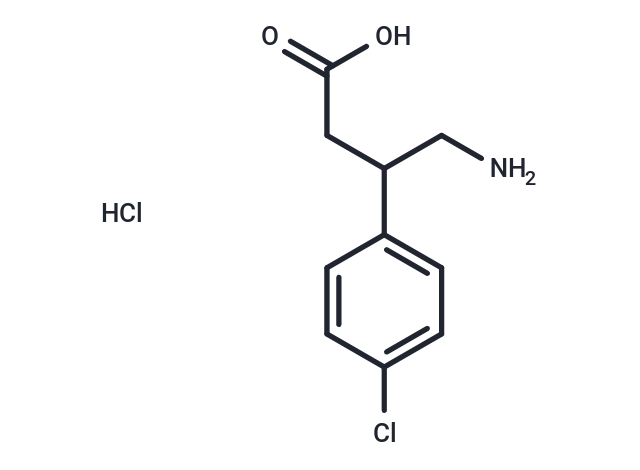Shopping Cart
- Remove All
 Your shopping cart is currently empty
Your shopping cart is currently empty

Baclofen hydrochloride (4-amino-3-(4-chlorophenyl)butanoic acid hydron chloride) is a GAMMA-AMINOBUTYRIC ACID derivative that is a specific GABA-B RECEPTORS agonist. It is used in the treatment of MUSCLE SPASTICITY, especially that due to SPINAL CORD INJURIES. Its therapeutic effects result from actions at spinal and supraspinal sites, generally the reduction of excitatory transmission.

| Pack Size | Price | Availability | Quantity |
|---|---|---|---|
| 1 mg | $80 | In Stock | |
| 5 mg | $178 | In Stock | |
| 10 mg | $272 | In Stock | |
| 25 mg | $448 | In Stock | |
| 50 mg | $630 | In Stock | |
| 100 mg | $852 | In Stock | |
| 200 mg | $1,130 | In Stock |
| Description | Baclofen hydrochloride (4-amino-3-(4-chlorophenyl)butanoic acid hydron chloride) is a GAMMA-AMINOBUTYRIC ACID derivative that is a specific GABA-B RECEPTORS agonist. It is used in the treatment of MUSCLE SPASTICITY, especially that due to SPINAL CORD INJURIES. Its therapeutic effects result from actions at spinal and supraspinal sites, generally the reduction of excitatory transmission. |
| Alias | 4-amino-3-(4-chlorophenyl)butanoic acid hydron chloride |
| Molecular Weight | 250.122 |
| Formula | C10H13Cl2NO2 |
| Cas No. | 28311-31-1 |
| Smiles | Cl.O=C(O)CC(C1=CC=C(Cl)C=C1)CN |
| Relative Density. | no data available |
| Storage | Powder: -20°C for 3 years | In solvent: -80°C for 1 year | Shipping with blue ice. |
| Solubility Information | DMSO: Slightly soluble |

Copyright © 2015-2025 TargetMol Chemicals Inc. All Rights Reserved.